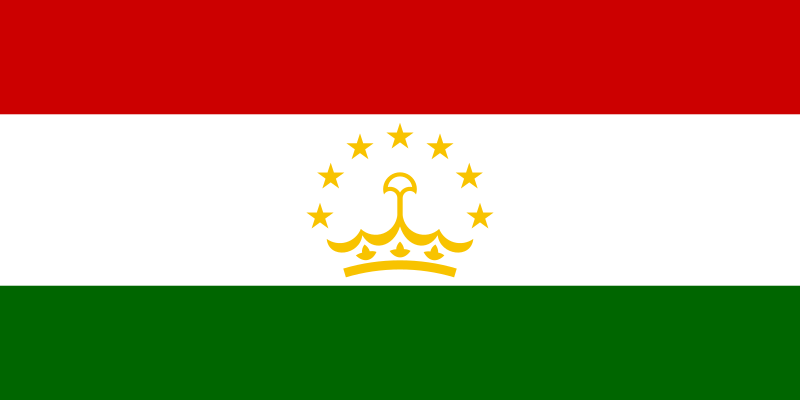 Tajikistan (pronounced /təˈdʒɪkɨstæn/ or /təˈdʒiːkɨstæn/; Тоҷикистон [ˈtɔdʒikɪsˈtɔn]), officially the Republic of Tajikistan (Tajik: Ҷумҳурии Тоҷикистон, Jumhurii Tojikiston; Russian: Республика Таджикистан, Respublika Tadzhikistan; Persian: جمهوری تاجیکستان Jomhuri-ye Tajikestan), is a mountainous landlocked country in Central Asia. Afghanistan borders it to the south, Uzbekistan to the west, Kyrgyzstanto the north, and People’s Republic of China to the east. Tajikistan also lies adjacent to Pakistan and the Gilgit-Baltistan region, separated by the narrow Wakhan Corridor.
Tajikistan (pronounced /təˈdʒɪkɨstæn/ or /təˈdʒiːkɨstæn/; Тоҷикистон [ˈtɔdʒikɪsˈtɔn]), officially the Republic of Tajikistan (Tajik: Ҷумҳурии Тоҷикистон, Jumhurii Tojikiston; Russian: Республика Таджикистан, Respublika Tadzhikistan; Persian: جمهوری تاجیکستان Jomhuri-ye Tajikestan), is a mountainous landlocked country in Central Asia. Afghanistan borders it to the south, Uzbekistan to the west, Kyrgyzstanto the north, and People’s Republic of China to the east. Tajikistan also lies adjacent to Pakistan and the Gilgit-Baltistan region, separated by the narrow Wakhan Corridor.
Most of Tajikistan’s population belongs to the Persian-speaking Tajik ethnic group, who share language, culture and history with Afghanistan and Iran. Once part of the Samanid Empire, Tajikistan became a constituent republic of the Soviet Union in the 20th century, known as the Tajik Soviet Socialist Republic (Tajik SSR). Mountains cover over 90% of this Central Asian republic.
After independence, Tajikistan suffered from a devastating civil war which lasted from 1992 to 1997. Since the end of the war, newly established political stability and foreign aid have allowed the country’s economy to grow. Trade in commodities such as cotton and aluminium has contributed greatly to this steady improvement.
Historically, Tajiks and Persians come from very similar stock, speaking variants of the same language and are related as part of the larger group ofIranian peoples. The Tajik language is the mother tongue of around 80% of the citizens of Tajikistan. The main urban centers in today’s Tajikistan include Dushanbe (the capital), Khujand, Kulob, Panjakent and Istaravshan.
The Pamiri people of Gorno-Badakhshan Autonomous Province in the southeast, bordering Afghanistan and China, though considered part of the Tajik ethnicity, nevertheless are distinct linguistically and culturally from most Tajiks. In contrast to the mostly Sunni Muslim residents of the rest of Tajikistan, the Pamiris overwhelmingly follow the Ismaili sect of Islam, and speak a number of Eastern Iranian languages, including Shughni, Rushani,Khufi and Wakhi. Isolated in the highest parts of the Pamir Mountains, they have preserved many ancient cultural traditions and folk arts that have been largely lost elsewhere in the country.
The Yaghnobi people live in mountainous areas of northern Tajikistan. The estimated number of Yaghnobis is now about 25,000. Forced migrations in the 20th century decimated their numbers. They speak the Yaghnobi language, which is the only direct modern descendant of the ancient Sogdian language.
Tajikstan artisans created the Dushanbe Tea House, which was presented in 1988 as a gift to the sister city of Boulder, Colorado.

Notes from Wikipedia








